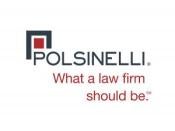The interest in special purpose acquisition companies (SPACs), also known as blank check companies, skyrocketed in 2020 with 250+ SPAC filings. This year has already outpaced last year with 350+ SPAC filings and nearly 450 SPACs currently active.
The sheer number of active SPACs means that several hundred need to move swiftly toward signing merger agreements, given that they have a time limit of 18 to 24 months to acquire a target company. However, the market shows that the number of acquisitions (or de-SPAC transactions) has slowed in 2021, putting pressure on those still on the lookout for a target. Additionally, as the US market becomes more congested, some SPACs are looking internationally for transaction opportunities.
What does this mean for the SPAC craze in 2021 and beyond? During our recent webinar, Partners Caitlyn M. Campbell, Harold C. Davidson, Ari Edelman, Eric Orsic and Mark S. Selinger discussed current issues, challenges and regulatory developments in the SPAC and de-SPAC market.
Below are key takeaways from the webinar:
SPAC Initial Public Offering (IPO) Trends
As compared to the first half of 2021, SPACs that launched their IPO in the second half of the year have offered investor-friendly terms (e.g., overfunded trust accounts (or issuance of founder shares to anchor investors), less time allotted to complete a business combination and better warrant coverage). Despite the high volume of SPACs currently seeking targets, they continue to find potential targets interested in entering into a business combination.
Navigating the De-SPAC Market
In addition to identifying and investigating promising business combination targets, SPACs are focused on structuring a deal that takes into account the competing interests of (1) the potential target’s shareholders and other stakeholders, (2) private investment in public equity (PIPE) investors and (3) the SPAC’s public investors. Target companies utilize various measures in determining whether a particular SPAC might be a good fit and evaluate SPACs based on the potential fundraising capabilities, as well as the operational, marketing or other value the SPAC and its sponsor can provide the target company. Target companies need to have confidence that the SPAC’s management team and advisors are capable of closing the deal, obtaining adequate PIPE financing or other fundraising commitments and minimizing redemptions by SPAC shareholders. In recent months, SPACs have experienced a tighter market for PIPE financing. In structuring deal terms (such as purchase price per share to be sold in the PIPE and the minimum cash threshold), parties face tension between the desire for deal certainty at the time the deal is announced and the desire to signal confidence to the market that the parties anticipate strong support from public investors after the deal is announced. In contrast to the deals that closed earlier in 2021, some SPACs recently opted to offer incentives to PIPE and/or public investors, such as warrants, improved pricing and/or price protection mechanisms.
Emphasis on Due Diligence
There has been an increased focus on due diligence in de-SPAC transactions. Although SPACs face time constraints and limited working capital, a thorough investigation into the target’s products, services, financials and operations is critical from both a general exposure perspective and a US Securities and Exchange Commission (SEC) enforcement perspective. The SEC is showing no signs of turning their attention away from SPACs and will likely continue to keep a close eye on the resulting public company’s financial disclosures following the business combination.




 i
i


